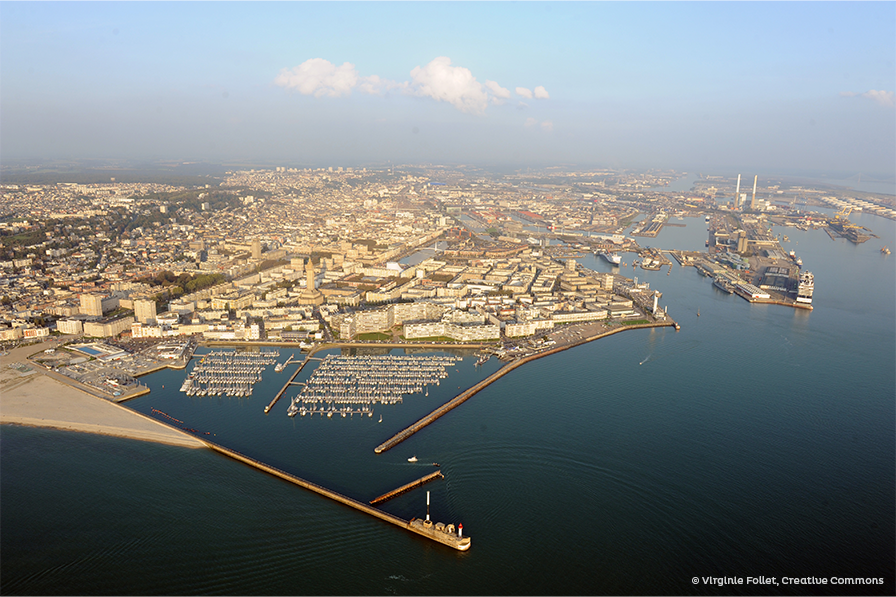The Havre floating LNG terminal connected up to the French gas transport network
The war in Ukraine has changed the way in which gas flows across France and Europe – most of it now flows from west to east Despite gas fill rates being satisfactory in France (nearly 100%), depending on which scenario plays out and based on technical or market uncertainty, France's ability to meet its own energy needs could be impacted this coming winter. That's why the state authorities have gone with TotalEnergies' idea to create a new LNG (Liquefied Natural Gas) import point in Le Havre in the form of a Floating Storage and Regasification Unit (FSRU). A floating terminal will mitigate the consequences of a sharp drop or disruption in the supply of gas, and will be easy to set up on a temporary and reversible basis.
In accordance with government decisions* and as part of its public service remit to balance France’s gas network, GRTgaz has managed operations to connect up this FSRU to the country's gas transport network. The FSRU has been in operation since 26 October 2023, and GRTgaz is incorporating the volumes of gas provided by the terminal into its arrangements for balancing the French gas system.
* Overview of government elements (source: Project to install a floating LNG terminal in the port of Le Havre – Energy – State Initiatives – The Government departments in the Seine-Maritime region).
Installation of a floating LNG terminal
Before the start of the conflict, France's gas system had a cushion of more than 30% and was also able to transit gas to Belgium, Italy and Spain. This cushion enabled it to withstand cold snaps.
Since the start of the hostilities in Ukraine, the new supply flows involving LNG terminals mean that margins are significantly lower for meeting demand should we have a cold winter or in the event of cold snaps in the second part of the winter. The introduction of the FSRU, alongside the efforts to which we are going to use gas more efficiently and produce renewable gas (biomethane) should provide more room for manoeuvre in the forthcoming years across the French and European gas systems.
- The Havre FSRU will provide regasification capacity of around 46 TWh annually – enough to meet 10% of demand in France starting in 2023 for five years.
- The introduction of the Havre FSRU represents approximately 22 TWh of additional imported gas this winter (the gas winter runs from 01/11/23 until 31/03/2024).
It's worth remembering that during the winter, gas accounts for half of all energy consumption in France.
Connecting this floating LNG terminal up to the French gas network
GRTgaz built the pipelines required to connect the floating storage regasification unit up to the gas transport network. The work involved laying a 3.2 km long pipeline, with a section running beneath the Havre’s Grand Canal made using a micro-boring machine over a distance of 650 m and at a depth of 7 m beneath the bottom of the navigation channel.
Work on the connection pipeline got underway in autumn 2022.
The introduction of this floating LNG terminal has involved creating a new temporary entry point (five years) for the Trading Region France: the Havre Methane Terminal Transport Interface Point.
GRTgaz is now integrating this new gas entry point into its flow arrangements to balance the network.
Useful contents
